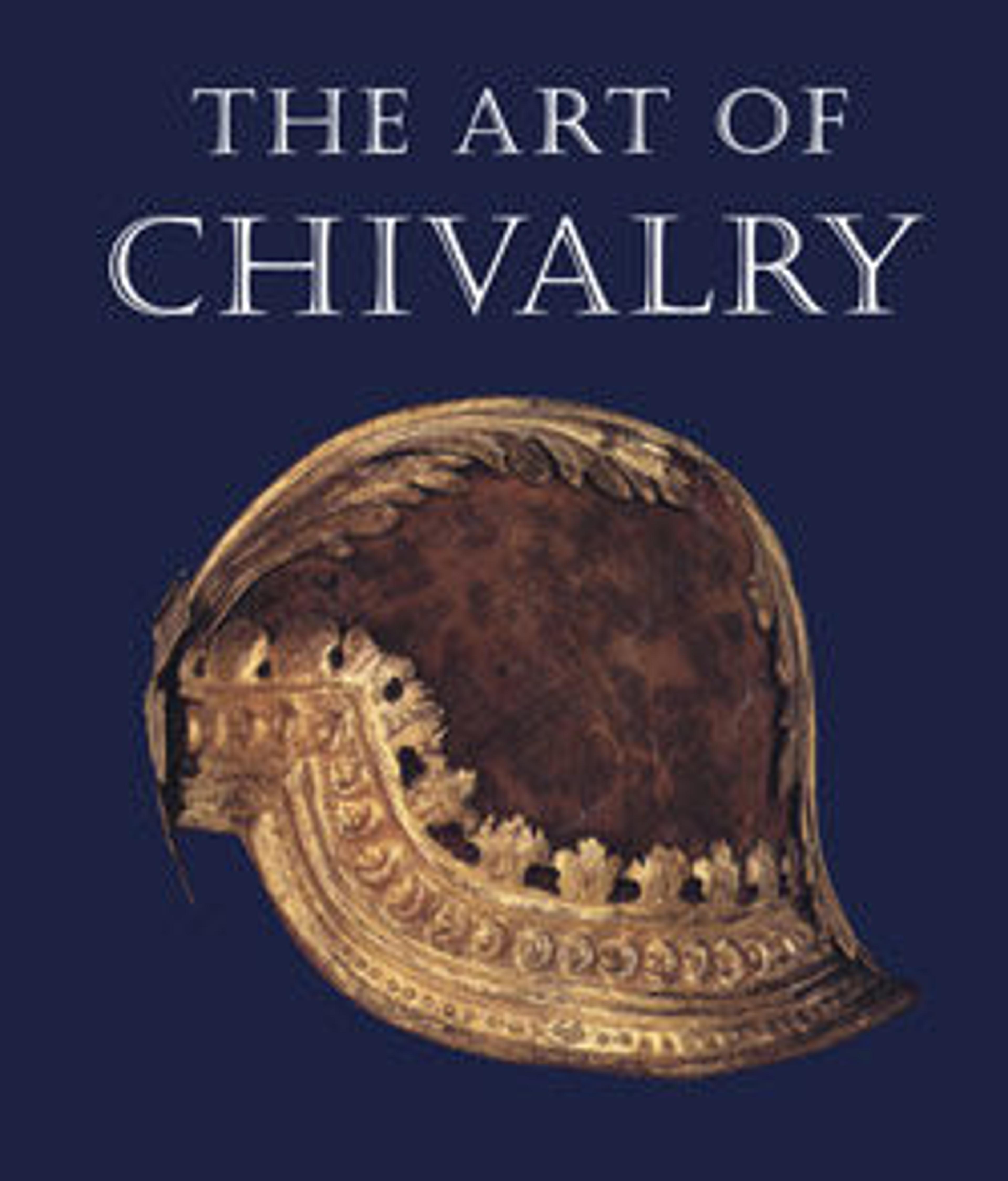Linstock
The complex head of this weapon comprises the following elements (from top to bottom): a short triangular blade with convex sides, pierced along the center with two slits; a circular medallion, chiseled in low relief at the center with a figure of a warrior in Roman armor, and framed by pierced foliate scrolls; two S-shaped arms terminating in stylized dragonheads whose curled tongues serve as match holders; and a circular socket with two straps, fit at the top with six semicircular prongs, each chiseled with a face in the center. The iron surfaces, except for the tip of the blade, are chiseled on a punched background and gilt; the ornament on the blade and socket includes stylized foliage and warriors within medallions.
Unlike the decorative halberds, glaives, and partisans with which palace bodyguards were armed, the linstock was strictly a military weapon. Its two arms, or prongs, held the smoldering matches used for igniting cannon, while the short blade also allowed it to be used as a weapon if necessary. Elaborate linstocks such as this one also served as a badge of rank for master gunners and artillery officers.
The punched and chiseled decoration of this piece recalls comparable decoration found on late sixteenth- and early seventeeth-century Italian armors. Two similar linstocks are in the Musée de l'Armée, Paris, and, like this example, have their match holders appropriately shaped as fire-breating dragons.
Unlike the decorative halberds, glaives, and partisans with which palace bodyguards were armed, the linstock was strictly a military weapon. Its two arms, or prongs, held the smoldering matches used for igniting cannon, while the short blade also allowed it to be used as a weapon if necessary. Elaborate linstocks such as this one also served as a badge of rank for master gunners and artillery officers.
The punched and chiseled decoration of this piece recalls comparable decoration found on late sixteenth- and early seventeeth-century Italian armors. Two similar linstocks are in the Musée de l'Armée, Paris, and, like this example, have their match holders appropriately shaped as fire-breating dragons.
Artwork Details
- Title: Linstock
- Date: ca. 1580
- Culture: Italian
- Medium: Steel, wood, gold
- Dimensions: L. 94 7/8 in. (240.9 cm); L. of head 13 1/4 in. (33.6 cm); W. 6 3/8 in. (16.2 cm); Wt. 3 lbs. 13 oz. (1730 g)
- Classification: Shafted Weapons
- Credit Line: Gift of William H. Riggs, 1913
- Object Number: 14.25.252
- Curatorial Department: Arms and Armor
More Artwork
Research Resources
The Met provides unparalleled resources for research and welcomes an international community of students and scholars. The Met's Open Access API is where creators and researchers can connect to the The Met collection. Open Access data and public domain images are available for unrestricted commercial and noncommercial use without permission or fee.
To request images under copyright and other restrictions, please use this Image Request form.
Feedback
We continue to research and examine historical and cultural context for objects in The Met collection. If you have comments or questions about this object record, please contact us using the form below. The Museum looks forward to receiving your comments.
